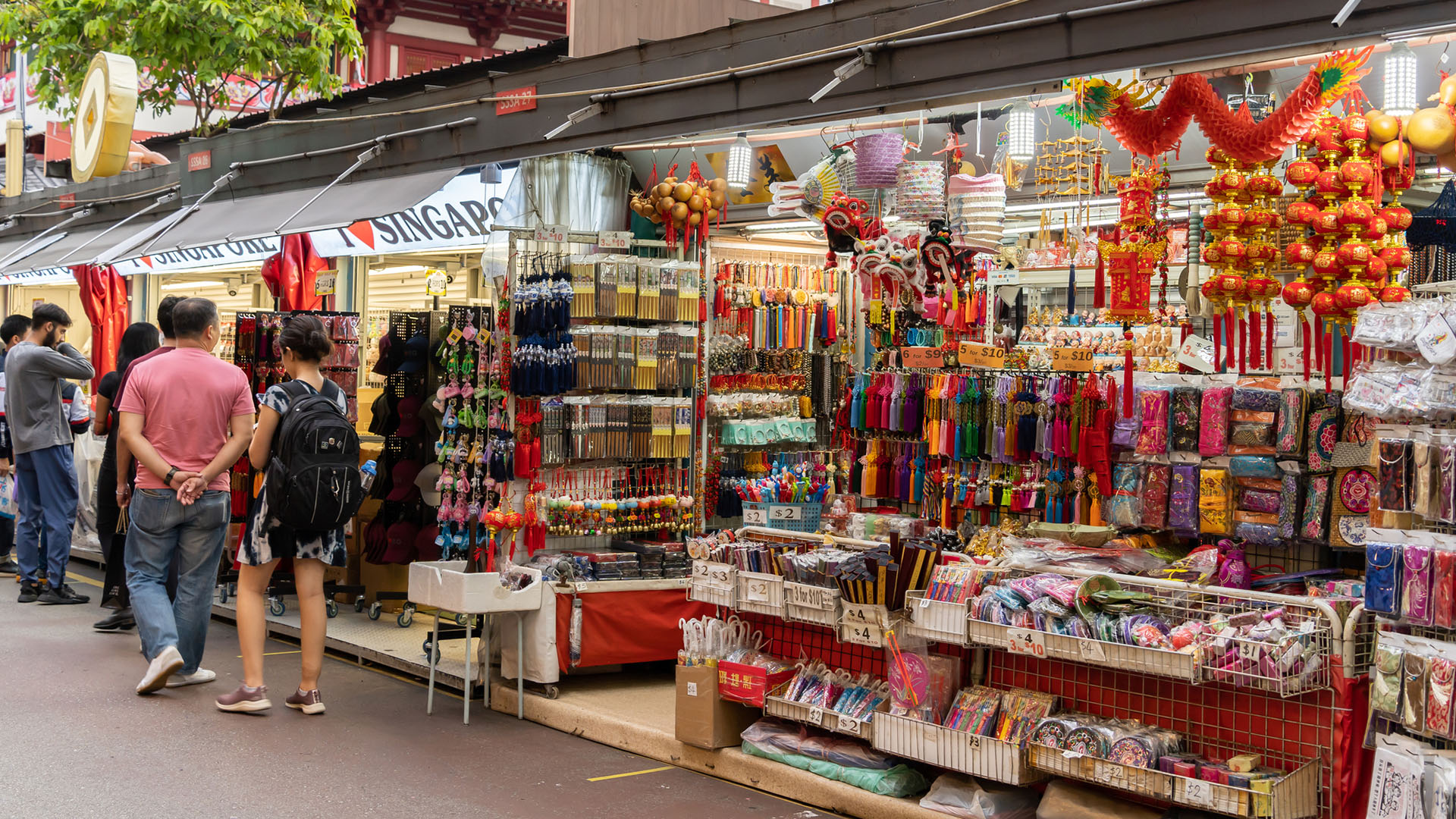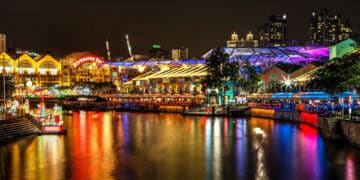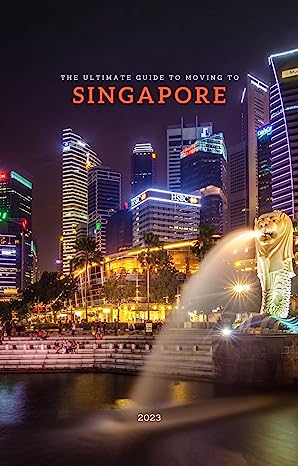Chinatown in Singapore is located in the Outram area, within the Central Area of Singapore. More specifically, it stretches from the Singapore River in the north to the Kreta Ayer Road in the south, and from Eu Tong Sen Street in the east to Neil Road in the west. The key streets that make up Chinatown are Pagoda Street, Smith Street, Sago Street, Trengganu Street and Temple Street.
Chinatown is an ethnic enclave that presents a blend of old and new, weaving the heritage of Chinese immigrants with the modernism of Singapore. Its proximity to the central business district, along with easy access via the Mass Rapid Transit (MRT), makes Chinatown a convenient and fascinating destination for both locals and tourists.
This area serves as a living museum of Chinese culture, history, and architecture, reflecting the community’s development from colonial times to the present day. Visitors will find themselves immersed in the energy and spirit of the enclave, with its traditional medicinal halls, shophouses, and teahouses juxtaposed against cool, contemporary cafes and boutiques.
Key Takeaways
- Chinatown encapsulates Singapore’s multicultural fabric within an accessible and historic urban area.
- The neighbourhood is a tribute to cultural preservation amidst dynamic urban growth.
- It offers an immersive experience with its plethora of cultural sites, diverse food scene, and distinctive markets.
Historical Context and Significance
Located at the heart of Singapore, Chinatown stands as a testament to the city’s richly heterogeneous past, a dynamic repository of its historical evolution and cultural legacies.
Immigrant Origins and Development
Chinatown was the enclave mandated by Sir Stamford Raffles for the Chinese community. In the early 19th century, immigrants arrived from various parts of China, bringing with them distinctive dialects, customs, and traditions. They established themselves according to language groups and occupations, which led to the development of distinct streets characterised by these trades and communities.
- Cantonese: Dominated areas such as Temple Street, known for various trades.
- Hokkiens: Centred around Telok Ayer Street.
- Teochews: Settled around South Canal Road.
These immigrants were instrumental in developing Chinatown from a mere residential quarter into the commercial hub that it subsequently became.
Chinatown Heritage Centre
The Chinatown Heritage Centre serves as a cultural capsule, offering insights into the lives of early Chinese immigrants.
- Location: Housed within three beautifully restored shophouses on Pagoda Street.
- Exhibits: Reveals the personal stories, struggles, and aspirations of Chinatown’s first denizens.
It provides an authentic backdrop against which the history of Chinatown is illuminated, embodying the collective memory and experiences of Singapore’s Chinese forebears who laid the foundation for today’s multifaceted neighbourhood.
Key Landmarks and Attractions
Chinatown in Singapore is a destination rich with historical and cultural significance. It offers a blend of heritage and modern attractions, each telling a unique part of Singapore’s story.
Buddha Tooth Relic Temple
The Buddha Tooth Relic Temple stands out as a monumental four-storey structure in the heart of Chinatown. It’s known for housing what is believed to be a tooth relic of Buddha. Visitors are drawn to its richly designed interiors, where the relic can be found in the temple’s stupa made from 320 kilograms of gold.
Sri Mariamman Temple
Sri Mariamman Temple is Singapore’s oldest Hindu temple. Recognisable by its distinctive gopuram (tower), it serves as an architectural and cultural centrepiece in Chinatown. Intricately decorated with deities and mythical creatures, the temple remains a focal point for Hindu ceremonies and festivities.
Thian Hock Keng Temple
The Thian Hock Keng Temple is one of the oldest Chinese temples in Singapore, dedicated to Mazu, the Taoist goddess of the sea. Built in the traditional southern Chinese architectural style, this temple provides insights into the religious practices of Chinese immigrants who settled in Singapore.
Singapore River and Marina Bay Proximity
Chinatown’s proximity to the Singapore River and Marina Bay adds to its allure. Both locations are pivotal to Singapore’s history and development. The river is lined with a mix of historical and modern establishments, while Marina Bay is known for its iconic skyline, including attractions such as the Marina Bay Sands and the Merlion Park.
Cultural Experience
Chinatown in Singapore offers a profound cultural experience anchored in its diverse heritage, serving as a melting pot where various ethnic celebrations and artistic expressions converge.
Cultural and Religious Festivities
Chinatown is vibrant with cultural and religious festivities throughout the year, reflecting Singapore’s rich tapestry of traditions. The district is particularly lively during Chinese New Year, where one can experience dragon dances, fireworks, and traditional food stalls that line the streets. Equally mesmerising are the celebrations of the Mid-Autumn Festival, with lanterns illuminating the area and mooncakes being a cherished treat.
This neighbourhood is home to the Sri Mariamman Temple, Singapore’s oldest Hindu temple, showcasing stunning architecture and a spiritual atmosphere during festivals like Deepavali and Thaipusam. Conversely, the echoes of Islamic calls to prayer can be heard from the Masjid Jamae, signifying the peaceful coexistence of religious diversity in Chinatown.
Art and Murals
Art enthusiasts will find Chinatown’s lanes adorned with murals that narrate the stories of early immigrants and Singapore’s development. These public artworks not only enhance the visual appeal of the district but also offer a glimpse into the community’s soul. In addition to street art, visitors have the opportunity to explore galleries and workshops which exhibit both traditional Chinese artwork and contemporary pieces, showcasing the evolution of art influence throughout Chinatown’s history.
Dining and Cuisine
Singapore’s Chinatown offers an extensive array of dining options that range from traditional street food to sophisticated restaurants and bars. This culinary hotspot is a vibrant showcase of Singaporean flavours and international cuisines, providing a myriad of choices for every palate.
Local Food and Hawker Centres
At the heart of local dining within Chinatown are its hawker centres, known for affordable and authentic Singaporean meals. The Chinatown Complex Food Centre stands as the largest in the area, boasting over 200 stalls. Maxwell Food Centre is another prominent spot where visitors can savour a range of local food. These centres provide a rich tapestry of Singapore’s culinary heritage, including offerings like Hainanese chicken rice, laksa, and char kway teow.
Restaurants and Bars
Beyond hawker stalls, Chinatown is home to an eclectic mix of restaurants and bars, scattered among its heritage shophouses. From upscale dining experiences to casual eats, the restaurants in this enclave offer an international palate – ranging from traditional Chinese to French and Mediterranean dishes. Bars in the vicinity provide a stylish backdrop for evening socialising, serving an assortment of handcrafted cocktails and imported wines. Visitors are spoilt for choice, with options that seamlessly blend the historic charm of the district with contemporary tastes.
Shopping and Souvenirs
Chinatown in Singapore offers a unique shopping experience that showcases a blend of traditional and contemporary retail. Visitors can find everything from customary souvenirs to modern clothing.
Traditional Shophouses
The historical shophouses of Chinatown stand as a testament to Singapore’s rich heritage. They are the go-to spots for authentic souvenirs such as Chinese tea sets, silk products, and traditional attire. The intricate architecture of these shophouses itself serves as a backdrop for the diversity of merchandise available.
Modern Boutiques
Nestled among the classic shophouses, contemporary boutiques in Chinatown offer an array of items crafted by local designers. These modern spaces provide shoppers with a selection of bespoke accessories and locally-designed souvenirs that reflect Singapore’s cosmopolitan culture.
Wet Markets
Wet markets are intrinsic to the local lifestyle. Chinatown’s wet market is a vibrant and bustling hub where visitors can immerse themselves in everyday Singaporean commerce. Here, one can find a variety of fresh produce, seafood, and meats alongside a selection of unique gifts and souvenirs that provide a taste of local flavours and traditions.
Chinatown In Singapore – Frequently Asked Questions
This section addresses common inquiries about Chinatown in Singapore, providing visitors with essential information for planning their visit.
Which side of Singapore is Chinatown?
Chinatown is situated in the central area of Singapore, within the larger district of Outram.
How many Chinatowns are there in Singapore?
Singapore is home to one main Chinatown, a prominent enclave known for its rich Chinese heritage and culture.
What time is best to visit Chinatown Singapore?
The best time to visit Chinatown in Singapore is during the daytime, primarily from 09:00 to 18:00, to experience the vibrant marketplaces and historic sites at their liveliest.
What can we buy in Chinatown Singapore?
Visitors can buy an array of items in Chinatown, ranging from traditional Chinese handicrafts to trendy clothing, and, most notably, a variety of delicious street food.
How late is Chinatown open in Singapore?
Individual business hours may vary, but generally, many shops and eateries in Chinatown remain open until late in the evening, with some dining spots available till the early hours.




